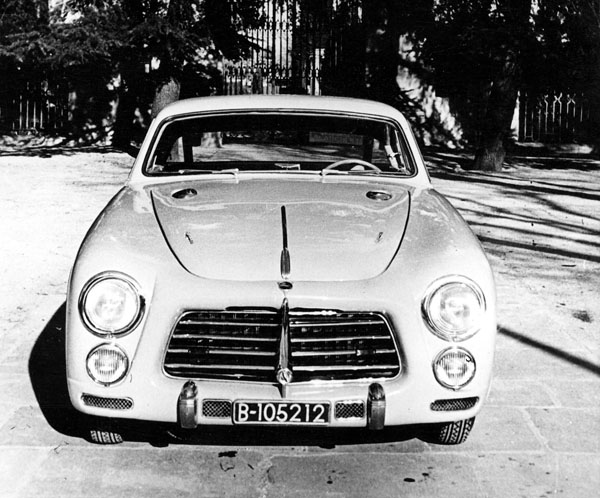
1955 Pegaso Z102
For those not around at the time, perhaps a short history lesson may help to set the
scene for background to the Pegaso, a Spanish marque whose name is probably
unfamiliar to many. In the early 1950s after World War II Spain was ruled by a
dictator, General Franco.
The country, which was desperately poor, had at the time only a very small motor
vehicle industry whilst other European countries used their wartime production
experience to develop automobile production, especially for export, to earn valuable
currency.
Franco wanted to convey to the world that Spain was a very advanced country.
Famous Spanish racing driver and engineer, Wilfredo Ricart, after running for some
time a successful engineering firm and dabbling in car production in Spain, joined
Alfa Romeo in Italy in 1936. He was wooed back to his home country to produce a
prestige motor car at E.N.A.S.A. truck and commercial vehicle factory.
The result was the Pegaso. A major problem with these cars was that Ricart built
them as though they were racing cars and each car was virtually built to order.
Hardly any two Pegaso cars were alike. They were very complicated, poorly
assembled and, if any were entered in racing competition, performed poorly. The
cars, however, were not inexpensive.
They had dohc V8 engines of varying capacity: 2.5-, 2.8- and 3.2-litre versions were
produced and, because they all had chain driven camshafts, they were incredibly
noisy. Some models fitted with a Rootes type supercharger developed as much as
213kW and, with the two-stage blower, 261kW. The engine used a form of dry sump
lubrication in which the oil tank was integral with the water radiator so as to obviate
the need for a separate oil cooler.
These engines powered the rear wheels through a five-speed crash’ gearbox. Whilst
the engine performance lacked something, the Pegaso chassis with torsion bar and
double wishbone front suspension and a de Dion rear end worked well but overall
body finish was poor.
The body and pressed steel chassis were not light and as a result the four-wheel
drum brakes were rather ineffective for a range of highly powered V8 cars and this
certainly was one of the reasons the Z102 had only limited competition success. Hill
climbs were a different story for it was here that Pegaso established a good
reputation at a number of European hill climbs.
The Pegaso was never able to establish itself as a prestige motor car. The Z103
followed but in spite of a larger V8 engine, now with a single camshaft operating the
valves through pushrods, only a few of these were built before automobile production
was closed down. Production of Pegaso trucks continued however and the ongoing
demand for these was, no doubt, due in part to the sophistication of the Pegaso
automobile.








